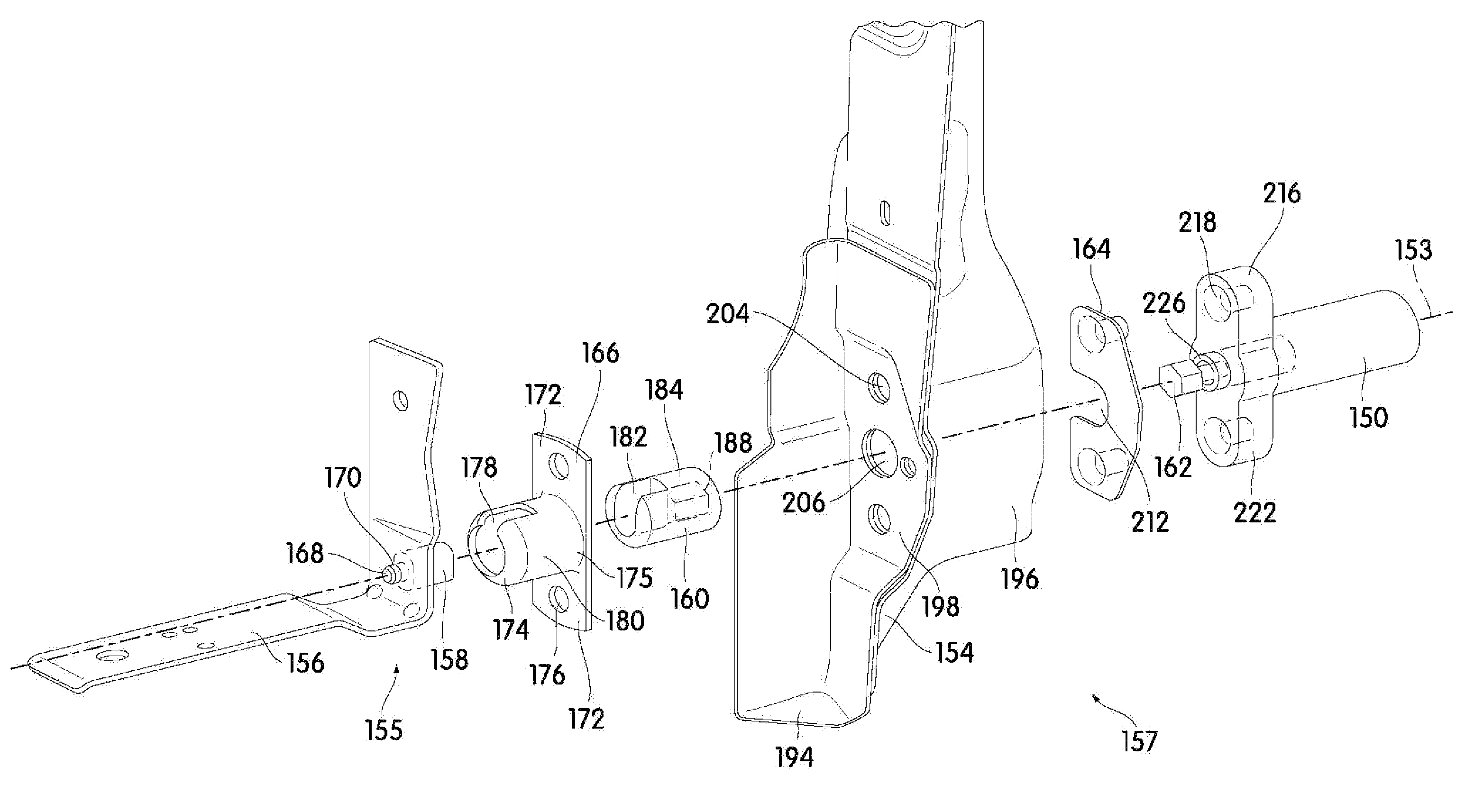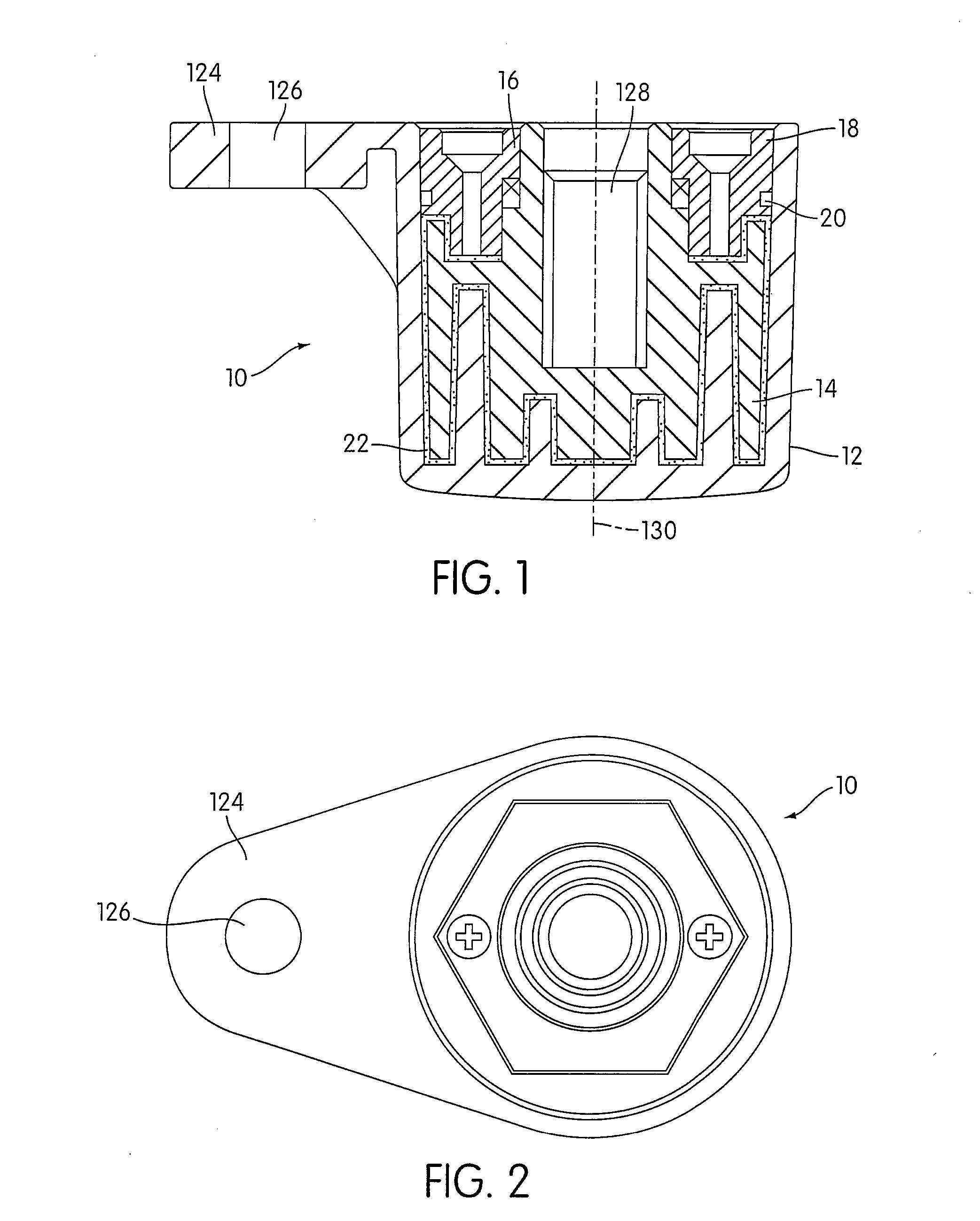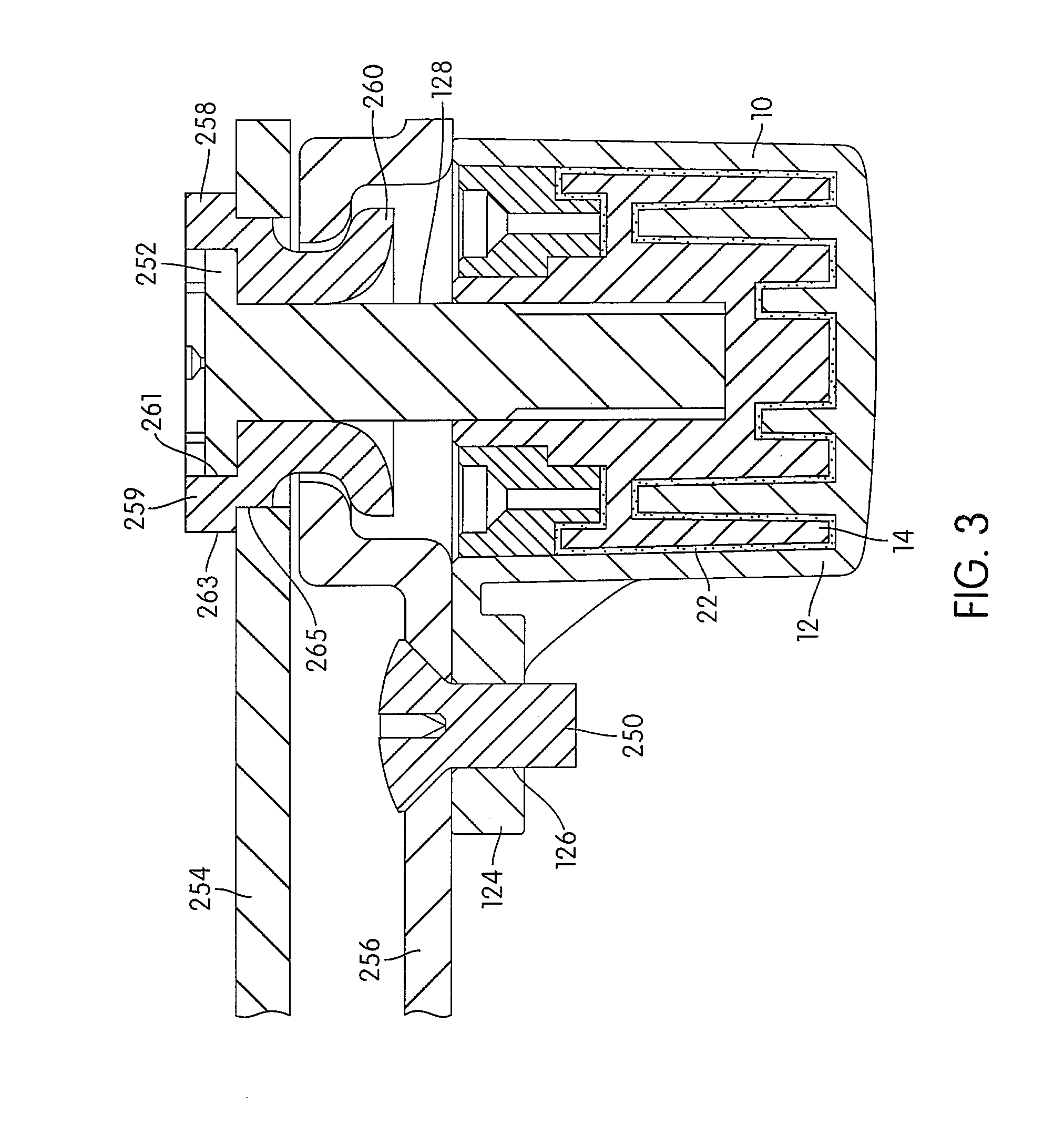Hinge with a viscous rotary damper
a rotary damper and hinge technology, applied in the direction of roofs, doors, manufacturing tools, etc., can solve the problems of difficult control of the door bounce back from the fully, the door may tend to aggressively bounce back onto the end user, and the operation of these mechanical devices may be perceived as “harsh” by the end user
- Summary
- Abstract
- Description
- Claims
- Application Information
AI Technical Summary
Benefits of technology
Problems solved by technology
Method used
Image
Examples
Embodiment Construction
[0036]FIGS. 1 and 2 illustrate a rotary viscous damper constructed in accordance with one embodiment of the present invention. This viscous damper is provided only as an example to illustrate one way for constructing the invention, and should not be regarded as limiting.
[0037]As shown in FIGS. 1 and 2, the viscous damper 10 includes a cover 12, a rotor 14, a seal 16, a seal cover 18 and an o-ring seal 20. In one embodiment, the seal 16 may also be in the form of the o-ring 20. The cover 12 and the seal cover 18 may be considered an enclosed housing. The rotor 14 is rotatably supported within the cover 12 of the viscous damper 10 and a viscous material 22 is filled in the space between the cover 12 and the rotor 14. The seal cover 18 is fixed to the open end of the cover 12 and the seal 16 is placed between the rotor 14 and the inner edge of the seal cover 18. The o-ring 20 is disposed between the outer edge of the seal cover 18 and the cover 12. The seal 16, the seal cover 18 and th...
PUM
 Login to View More
Login to View More Abstract
Description
Claims
Application Information
 Login to View More
Login to View More - R&D
- Intellectual Property
- Life Sciences
- Materials
- Tech Scout
- Unparalleled Data Quality
- Higher Quality Content
- 60% Fewer Hallucinations
Browse by: Latest US Patents, China's latest patents, Technical Efficacy Thesaurus, Application Domain, Technology Topic, Popular Technical Reports.
© 2025 PatSnap. All rights reserved.Legal|Privacy policy|Modern Slavery Act Transparency Statement|Sitemap|About US| Contact US: help@patsnap.com



